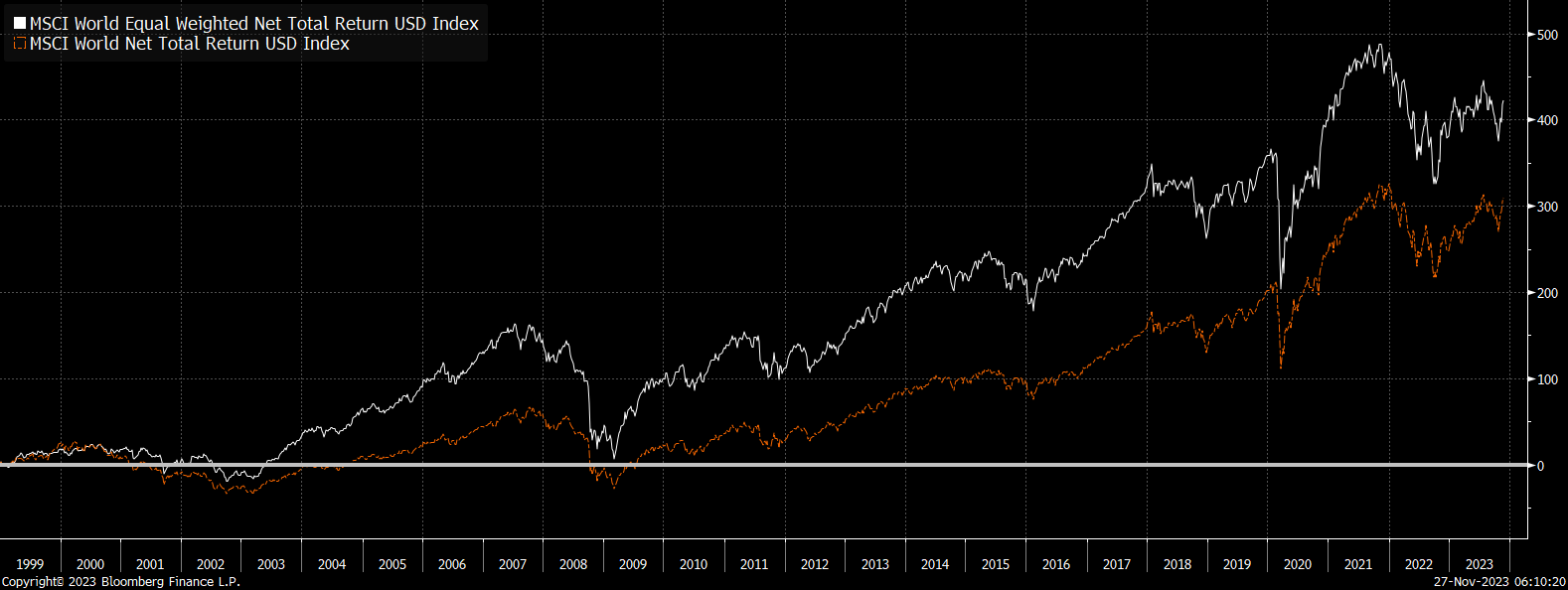Nov 27, 2023
Larry Berman on where markets might go in 2024
By Larry Berman
Larry Berman's Educational Segment
Long-term equity market growth performance has tended to favour smaller companies versus mature large companies. We can see this in longer-term charts where the equal weight index tends to beat the market cap weighted index over time. The average stock has outperformed the market cap weighted stock by 0.83 per cent per year since 1999.

But starting in mid-2018, that trend has broken, and larger caps beat the average stock by an average of 4.70 per cent per year. We’ve looked for a catalyst in interest rates, artificial intelligence breakthroughs and changes in risk premiums. We can’t figure out exactly what has caused this shift where the average stock is performing relatively poorly compared to the larger companies. We think it’s likely linked to the quality of GDP, where in recent years a significant part of growth has been credit-fuelled and concentrated in fewer industries. It likely also has to do with some of the shifts in de-globalization where trade wars and rebalancing of supply chains are likely contributing to slower global growth and higher inflation.
The FAANG+ stocks have been a big part of it in recent years and specifically in 2021 and 2023, but it does not explain the pre-COVID period of underperformance.
In the U.S., the S&P 600 small cap index (the better quality small-cap companies versus the Russell 2000 where 40 per cent of stocks are not profitable) has outperformed the S&P 500 when the economy is healthy. Small-cap stocks are far more sensitive to the economic cycle than large-cap, more mature companies. Thus, they are considered riskier.
Looking forward, the markets are priced for and expecting a “Goldilocks” soft landing. Strategists seem to be falling over themselves to upgrade their 2024 outlooks in recent weeks. Recall that 2023 was almost universally expected to be a recession year, and even with the unprecedented rise in yields this year, markets held up very well. We would be beyond shocked if the fastest rate hike cycle in history with massive QT and deficits ended in a soft landing. But that is consensus, and if 2023 was an example, consensus may not be what we get. We were bullish in October 2022 as large cap valuations were more attractive, but we do not see that today and for 2024.
Keep U.S. small caps on your radar for the next few years. They are close to multi-decade lows on valuations. They are on my radar. In the US (IJR), for Canadians on the TSX (ZSML, XSU, MUSC) are all good ways to play it depending on your currency views and liquidity needs. If the economy is going to hit a soft landing, then small caps should outperform. This year was and still is a chase performance year as average stock performed poorly, with 32 per cent of NASDAQ stocks above their 200-day average and just 48 per cent of the NYSE.
Follow Larry:
YouTube: LarryBermanOfficial
Twitter: @LarryBermanETF
Facebook: @LarryBermanETF
LinkedIn: LarryBerman
www.etfcm.com